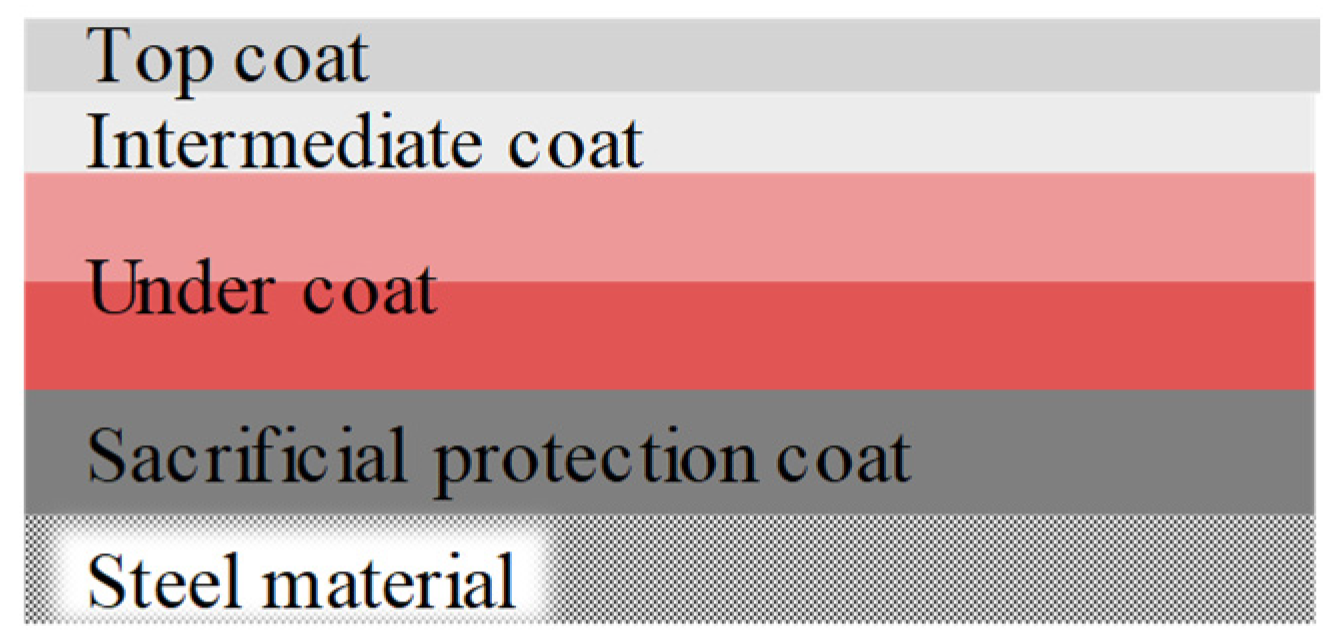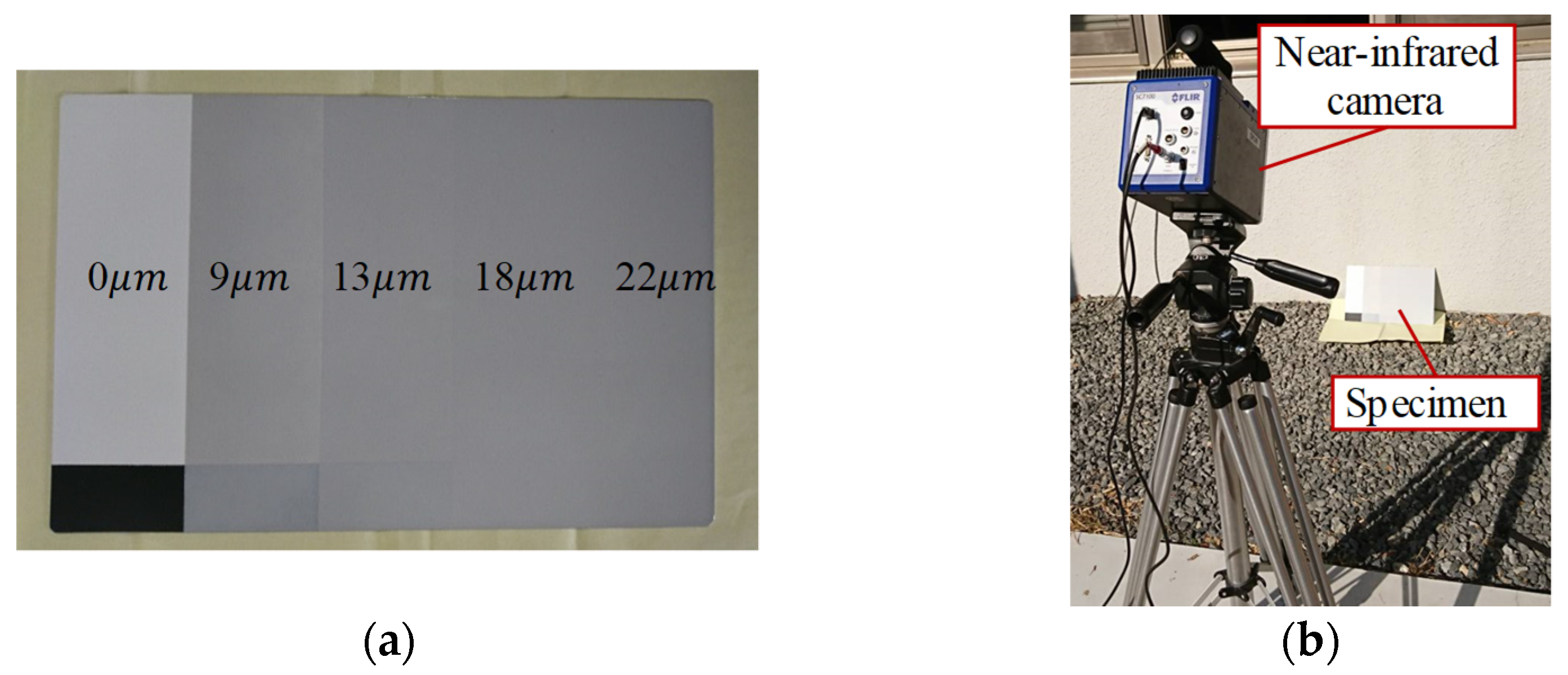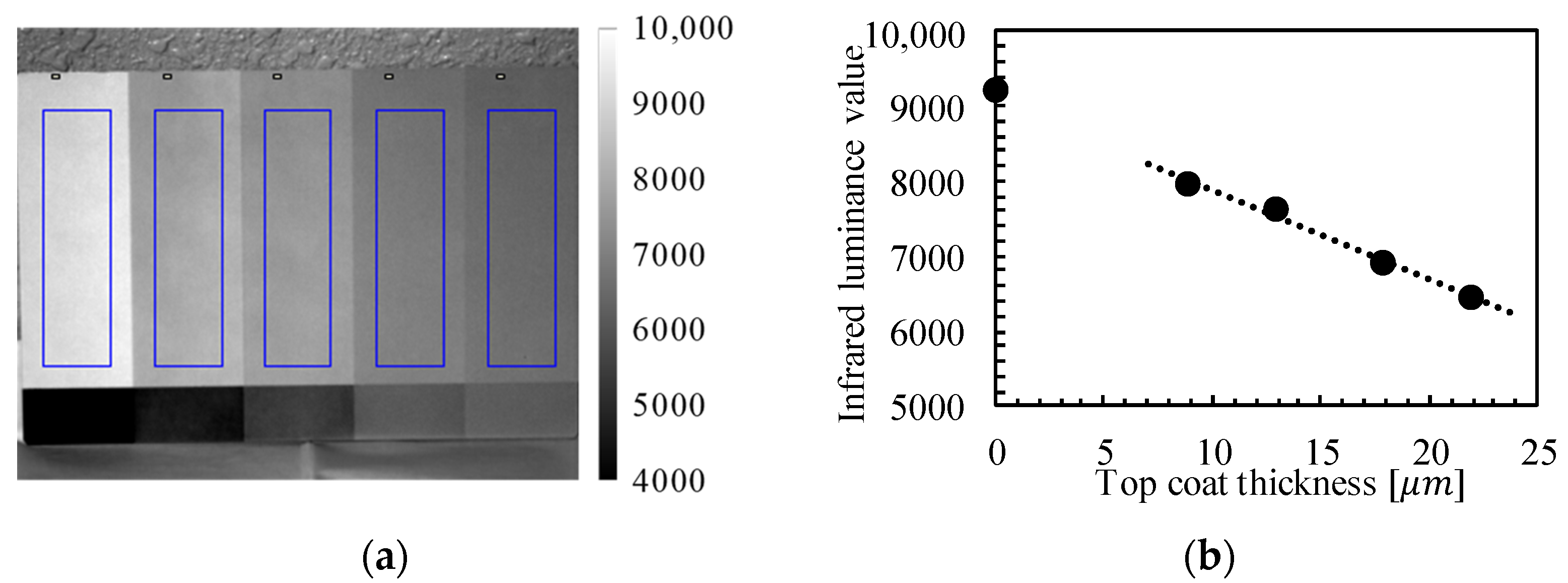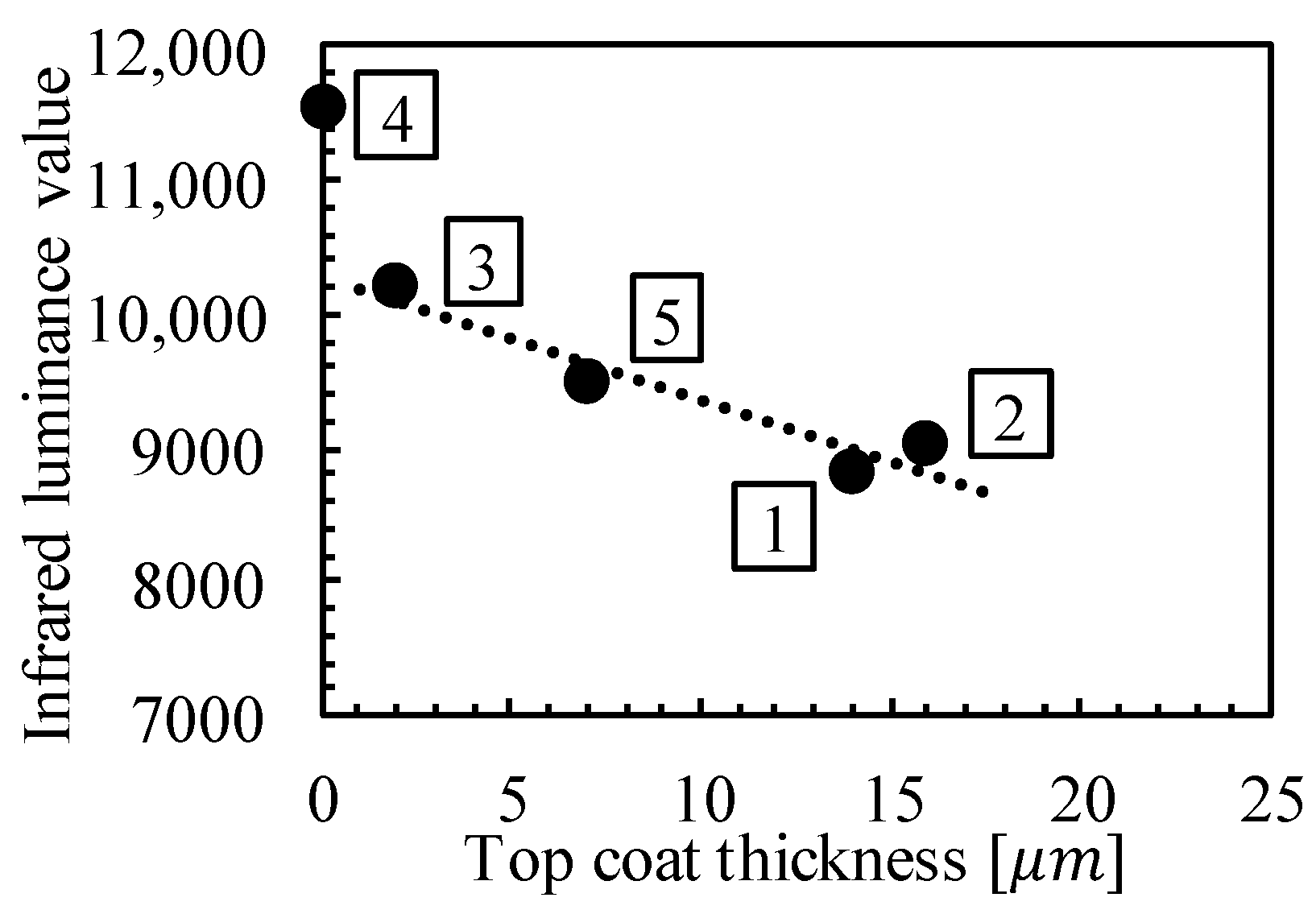Quantitative Deterioration Evaluation of Heavy-Duty Anticorrosion Coating by Near-Infrared Spectral Characteristics †
Abstract
:1. Introduction
2. Principle of Quantitative Nondestructive Evaluation for the Thickness of Coatings by Near-Infrared Spectral Characteristics
3. Experimental Result for the Specimen Having Various Thicknesses of Top Coat
4. Experimental Result for the Bridge in-Service
5. Conclusions
Funding
Data Availability Statement
References
- Sakagami, T. Remote nondestructive evaluation technique using infrared thermography for fatigue cracks in steel bridges. Fatigue Fract. Eng. Mater. Struct. 2015, 38, 755–779. [Google Scholar] [CrossRef]
- Sakagami, T.; Mizokami, Y.; Shiozawa, D.; Hayashi, M.; Takeguchi, M. Application of infrared camera for steel bridge maintenance. In Proceedings of the Thermosense: Thermal Infrared Applications XL, Orlando, FL, USA, 16–19 April 2018; Volume 10661. [Google Scholar]






Publisher’s Note: MDPI stays neutral with regard to jurisdictional claims in published maps and institutional affiliations. |
© 2021 by the authors. Licensee MDPI, Basel, Switzerland. This article is an open access article distributed under the terms and conditions of the Creative Commons Attribution (CC BY) license (https://creativecommons.org/licenses/by/4.0/).
Share and Cite
Kishigami, S.; Matsumoto, Y.; Ogawa, Y.; Mizokami, Y.; Shiozawa, D.; Sakagami, T.; Hayashi, M.; Arima, N. Quantitative Deterioration Evaluation of Heavy-Duty Anticorrosion Coating by Near-Infrared Spectral Characteristics. Eng. Proc. 2021, 8, 26. https://doi.org/10.3390/engproc2021008026
Kishigami S, Matsumoto Y, Ogawa Y, Mizokami Y, Shiozawa D, Sakagami T, Hayashi M, Arima N. Quantitative Deterioration Evaluation of Heavy-Duty Anticorrosion Coating by Near-Infrared Spectral Characteristics. Engineering Proceedings. 2021; 8(1):26. https://doi.org/10.3390/engproc2021008026
Chicago/Turabian StyleKishigami, Shunsuke, Yuki Matsumoto, Yuki Ogawa, Yoshiaki Mizokami, Daiki Shiozawa, Takahide Sakagami, Masahiro Hayashi, and Noriyasu Arima. 2021. "Quantitative Deterioration Evaluation of Heavy-Duty Anticorrosion Coating by Near-Infrared Spectral Characteristics" Engineering Proceedings 8, no. 1: 26. https://doi.org/10.3390/engproc2021008026
APA StyleKishigami, S., Matsumoto, Y., Ogawa, Y., Mizokami, Y., Shiozawa, D., Sakagami, T., Hayashi, M., & Arima, N. (2021). Quantitative Deterioration Evaluation of Heavy-Duty Anticorrosion Coating by Near-Infrared Spectral Characteristics. Engineering Proceedings, 8(1), 26. https://doi.org/10.3390/engproc2021008026





